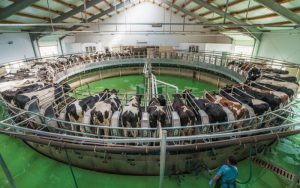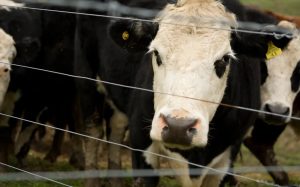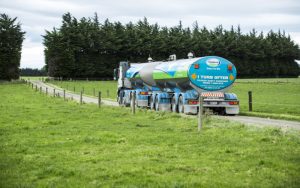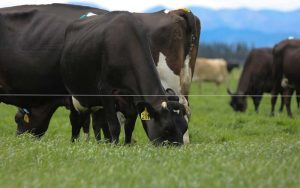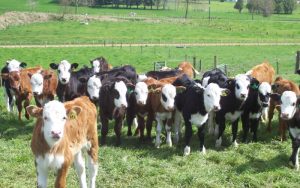
While the Government’s recently released proposal for pricing agricultural emissions stops short of stating the likely price for methane (CH4), discussion in the document still focuses on 11cents/kg CH4.
That was the price used by the He Waka Eke Noa agricultural sector partnership in its modelling.
The Government commissioned its own modelling that included work on both the processor levy and the farm-level levy.
It looked at three price scenarios for methane to estimate the possible emissions reductions in 2030 comparing the modelled scenarios with a scenario with no pricing system.
The prices used:
-A low price – 8 cents/kg CH4
-A medium price – 11 cents/kg CH4 (suggested by the partnership as the starting price)
-A high price – 14 cents/kg CH4
Even at the low price, the modelling has found total agricultural emissions are expected to reach the targeted 10% reduction from 2017 levels by 2030, with methane emissions alone dropping by 12%, the Government’s consultation document says. (page 59 of the consultation document)
For dairy farmers the models suggest the farm-level levy will mean a drop in revenue of 6-7%, significantly less than the impact borne by sheep and beef farmers who are expected to lose 18-24% of their revenue. (see table A on page26)
Milksolids (MS) production is expected to drop by 4-5%.
For the red meat sector the drop in production and revenue is significant and harsh with sheep and beef revenue likely to take an 18% hit at the low levy price and drop by almost a quarter (24%) at the high price.
Lamb production is predicted to tumble by 16% at the 8c/kg CH4 farm level levy and 20% at the14c/kg CH4 price.
However, beef production is modelled to increase by 8% at the low levy price and 5% at the medium 11c/kg CH4 price but drop by 14% at the high price.
That’s because more cost-effective mitigation technologies are assumed for beef cattle compared with sheep which would allow a degree of switching from running sheep to running beef cattle, the consultation document says.
It’s uncertain what the effect emissions pricing will have on the dairy sector’s push to cut bobby calf numbers.
DairyNZ says He Waka had recommended emission price levies would be set by Government ministers on advice from a system oversight board, a collaborative governance approach between government, Māori, and the agriculture sector.
He Waka proposed a price for methane, nitrous oxide, and carbon dioxide.
“The methane price would be set based on a broad set of pricing criteria which considers progress towards legislated emissions targets, but also social and economic impacts.
“Nitrous oxide price would be set at the level needed to fund sequestration, research and development, incentives, and administration of the scheme.
“The price for methane should be guided by a wider set of criteria than just targets alone.
“It needs to also consider the availability of mitigation technologies, social and economic impacts, and potential emissions leakage alongside target trajectories.
“The price should only collect enough levy to deliver on the scheme’s intended purpose and outcomes.
“Prices should not be linked to the NZ ETS and should be set every three years to provide stability and certainty,” DairyNZ says in its review of the consultation document.” (link below)
Impact on LUDF
At the Lincoln University Dairy Farm (LUDF) focus day in October, just before the release of the Government’s consultation document, Lumen Environmental resource management adviser Nicole Mesman walked farmers through the likely cost of emissions pricing using the LUDF as an example farm.
The calculations are based on LUDF’s 2025/26 obligations using its 2021/22 season results.
They are based on He Waka pricing of 11c/kg CH4 and a nitrous oxide price of $4.25/tonne.
The new Government proposal also has 11c/kg CH4 but uses $10.86/t CO2e for nitrous oxide (N2O) as the 2030 price.
LUDF’s methane emissions, based on cow numbers, milk production and feed eaten are estimated at 1655t of carbon dioxide equivalent (CO2e).
To convert tonnes of CO2e to kg CH4 divide by 25.
1655t CO2e = 1,655,000kg CO2e
1,655,000 CO2e ÷ 25 = 66,200kg CH4
66,200kg CH4 x 11cents/kg CH4 =$7282
LUDF N2O emissions = 539t CO2e
539t CO2e x $4.25 = $2291 (He Waka price)
539t CO2e x $10.86 = $5853.54 (Government 2030 modelling price)
Total cost for LUDF based on He Waka N2O price = $9573
If the Government’s 2030 N2O model price is used the total cost is $13,135.54
Nicole says one of the key issues for farmers under the Government proposal is that the price of emissions is unclear and that the methane price will largely be based on progress towards emissions reduction targets.
Without cost-effective mitigation technologies and the ability to offset cost with sequestration “credits” reductions will require reduced feed inputs and/or reduced stocking rates.
The sheep and beef sector is expected to bear the brunt of the hit on profitability because those livestock emit more greenhouse gases relative to the overall net revenue.
LUDF farm consultant Jeremy Savage from Macfarlane Rural Business says at the starting price of 11c/kg CH4 will equate to 2.4c/kg MS or 0.2c/kg drymatter (DM) fed or $20/t DM.
That’s based on it taking 10kg DM to produce 1kg MS and research putting methane production at 0.22kg CH4 for every kg MS produced.
Analysis across Macfarlane Rural Business clients shows that for every tonne of DM harvested, clients lifted profit by $820 in the 2021/22 season and over the longer term they boosted profit by $600/t DM harvested.
For a high-input system where supplements are fed all season to support the higher stocking rate where supplement costs are 59c/kg DM total feed costs for every kg of milksolids will be $5.90 (the response rate of 1kg MD/10kg DM). If cow running costs or core cow cost is $3/kg MS produced the cost to produce that marginal milk (milk produced through supplement rather than pasture production) will be $8.90/kg MS. (see link for cow running cost details)
The methane price will add another 2.4c/kg MS to that.
The additional feed costs are still the biggest cost for that marginal milk but what we don’t know is where the emissions price will go to.
With the aim to use pricing to drive emissions down to reach the target the price could rise but what this shows is that at current milk prices dairy is significantly better placed than sheep and beef to bear the additional cost, supporting modelled predictions of a 16-20% reduction in lamb production compared with a 4-5% reduction in dairy production.
Links
DairyNZ’s view – A good summary of what the sector proposed through He Waka Eke Noa and the Government’s recently released proposal which is open for consultation until November
The full Government consultation document on pricing agricultural emissions
environment.govt.nz/assets/publications/Pricing-agricultural-emissions-consultation-document.pdf
The Government-commissioned report on the impacts of emissions pricing on the rural sector
www.mpi.govt.nz/dmsdocument/53632-Imapcts-of-CC-mitigatin-policies-on-the-primary-sector
Nicole Mesman Lumen Environmental analysis LUDF
www.ludf.org.nz/assets/Handout-4-GHG-Lumen-NicoleM-28Sep22.pdf
LUDF methane and costs – Jeremy Savage analysis
www.ludf.org.nz/assets/Handout-4a-GHG-MRB-JSavage-28Sep22.pdf





